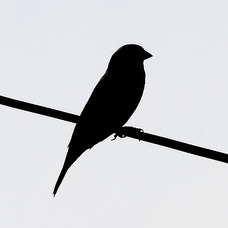August 29, 2014 — When songbird populations started dropping across the U.S. in the 1950s, conservationist Rachel Carson saw disaster waiting in the wings. Something was going terribly wrong with the natural world, she concluded in her 1962 book Silent Spring — something that could harm humans, too, if we didn’t figure it out and fix it. Subsequent actions to ban DDT and gain tighter controls on other pesticides averted what could have been a full-blown disaster not only for birds but also for humans and other species that ultimately depend on the integrity of natural systems.
In a striking 16-part series of articles that began this week and will continue into October, Environmental Health News, in partnership with National Geographic, is documenting similarly disturbing observations in bird populations around the world today. From chickadees with malformed beaks in Alaska to waterfowl with brain lesions in the southeastern U.S., the series is looking at a spectrum of emerging issues with bird populations and asking what these anomalies might be trying to tell us today.
“When it comes to environmental health, birds are on the front line,” says EHN editor in chief Marla Cone in a video summary of the series. “‘Canary in the coal mine’ isn’t just a proverb anymore. Birds around the world are telling us what ails in their environment, and possibly what ails us as well.”
Read the first five installments and watch for the rest at Winged Warnings. Image by Dyniss Rainer (Flickr | Creative Commons)
Ensia shares solutions-focused stories free of charge through our online magazine and partner media. That means audiences around the world have ready access to stories that can — and do — help them shape a better future. If you value our work, please show your support today.
Yes, I'll support Ensia!
